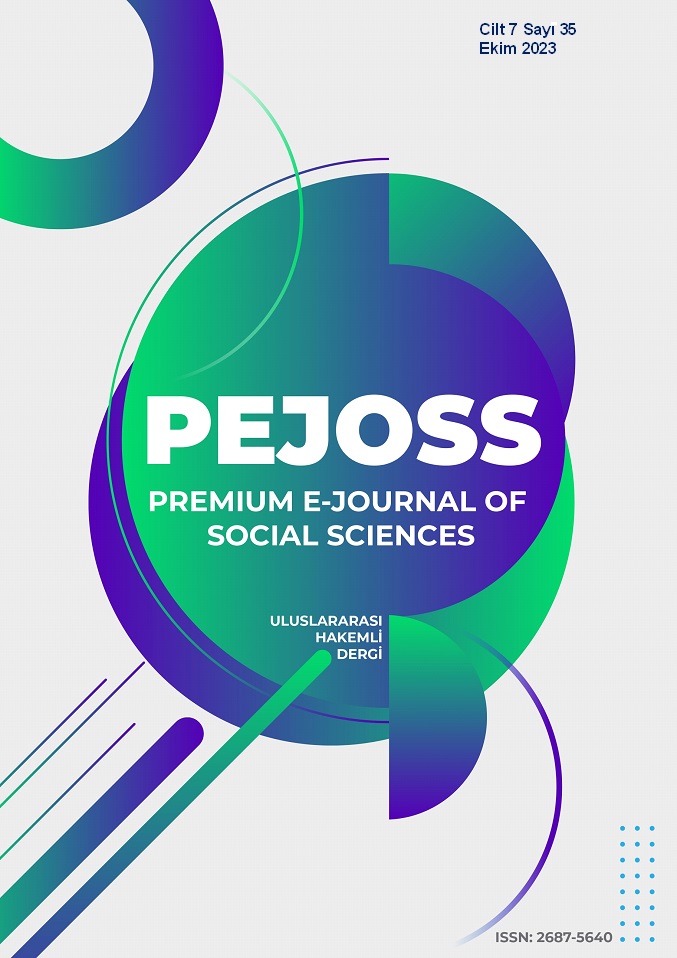The Reaction of the Woman Composer Hatıra Ahmedli Cafer to Social Events Through Her Compositions
DOI:
https://doi.org/10.5281/zenodo.10030060Keywords:
Woman composer, Karabakh, MusicAbstract
Although women composers have been less visible in society from the past to the present, they have tried to express their pain through music throughout history. However, this has been challenging due to the challenges of the eras in which they lived. Many women composers concealed their identities using pseudonyms and made significant efforts to share their compositions with listeners. Today, women composers play a more active role, thanks to the availability of more equitable music education.
In the last century, the contribution of women composers to music has become visible, and they have been able to express the problems of their time more fearlessly. In this context, Hatıra Ahmedli Cafer openly expressed her reaction to the Karabakh events in many of her works ("Bayatılar" for piano, significant symphonic works, etc.) that she composed for 30 years. In light of the social sufferings of the geography she lived in, the composer used the language of music, one of the means of expression that best reflects her intellectual color. Thus, she emphasized tolerance, love, and respect instead of hatred in the works she composed under the testimony of the sufferings she experienced. In her works, she has deepened the sufferings experienced by blending them with cultural symbols and quotations. She has carried the mission of not forgetting these sufferings and passing them on to future generations. In addition, in her works reflecting universal chaos and order, she also depicted the tragedy created by man's hand.
The motif of "Sela," a feeling of deep sadness, despair, and anguish, which the composer often uses, is the main subject of her works. With a small motif from the Azerbaijani minstrel folk epic "Yanık Keremi" (Kerem and Aslı), she depicted the struggle for the existence of light in many of her works, emphasizing the bitter reality that war and darkness prevail over the symbol of love, peace, and light. In 1920, with the Russian invasion of Azerbaijan, the composer's family suffered greatly, and the melodies arising from these sufferings were used in many of her works with the lullaby motif taught by her grandmother, who was the daughter of Bey.
As a woman composer, Hatıra Ahmedli Cafer inspired new generations with her original and free musical stance towards social events. Her works continue to be the voice of not only the persecution of the Azerbaijani people but also of all women who are persecuted around the world.
Downloads
References
Ahmedli Cafer, H. (2017, Nisan 21). Hacettepe Üniversitesi Senfoni Orkestrası Konser Program Notu. Ankara.
Akdeniz, A. Ö. & Artaç, A. (2023). Konservatuvar eğitiminde Brahms’ın op.108 re minör keman- piyano sonatının, bestecinin müzikal stil ve çalış teknikleri açısından incelenmesi ve öneriler. Rast Müzikoloji Dergisi, 11 (2) 263-288. https://doi.org/10.12975/rastmd.20231126
Badalbeyli, E. (1969). Musigi Lugati. Elm Yayınları.
Çivril, B. (2022). Hatıra Ahmedli Cafer’in Sonat-613 Adlı Eserinin İncelenmesi. [Sanatta Yeterlik Sanat Çalışması Raporu]. Hacettepe Üniversitesi Güzel Sanatlar Enstitüsü.
Sobolev, O. (2017, Mart 8). Haksız yere unutulmuş: 7 seçkin kadın besteci. Classical Music News Ru. https://www.classicalmusicnews.ru/articles/7-women-composer/
Downloads
Published
How to Cite
Issue
Section
License
Copyright (c) 2023 Premium e-Journal of Social Science (PEJOSS)

This work is licensed under a Creative Commons Attribution 4.0 International License.


